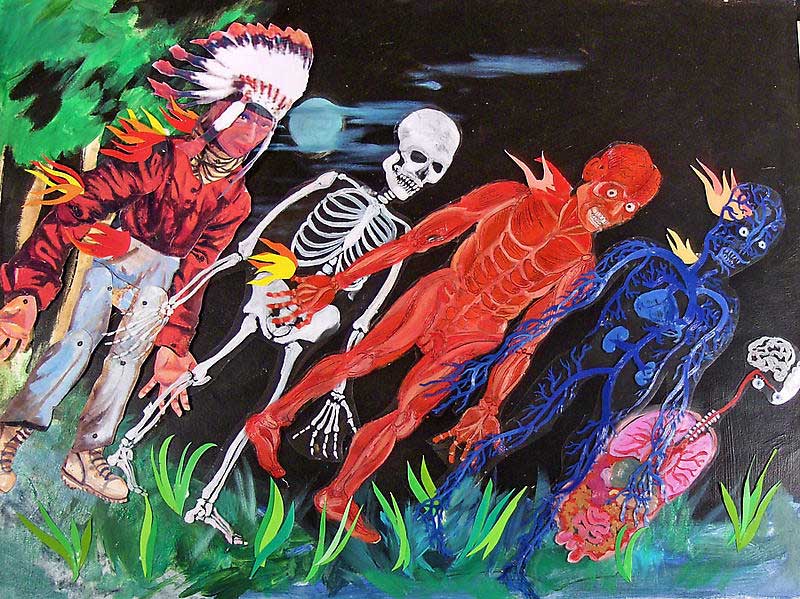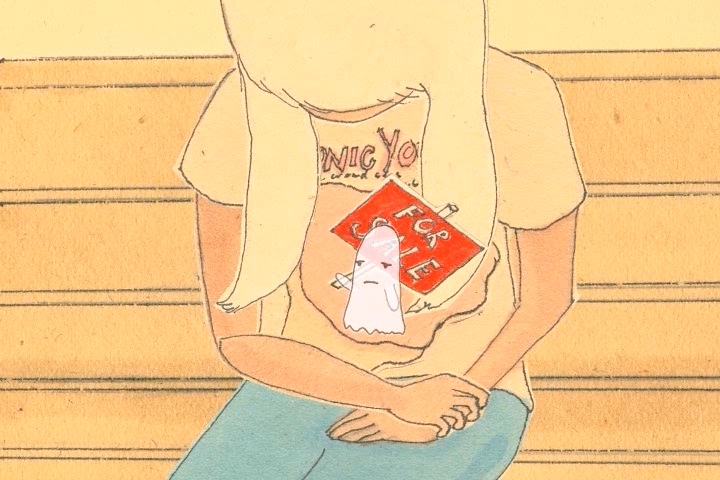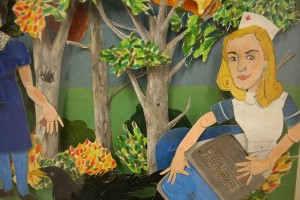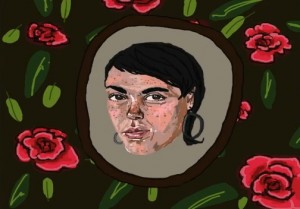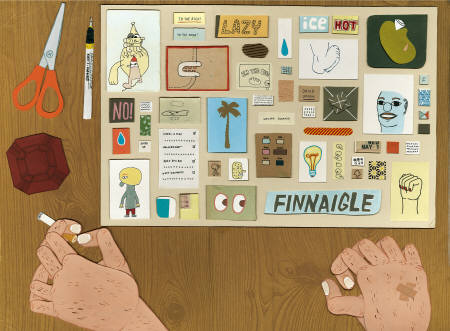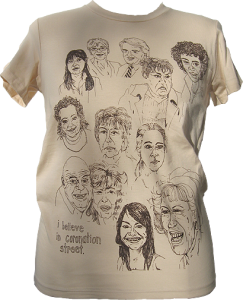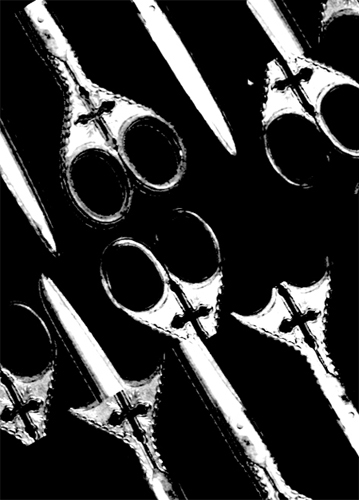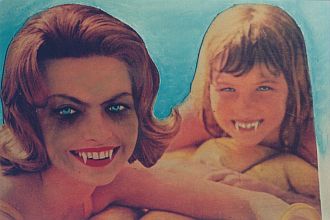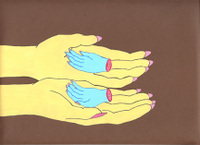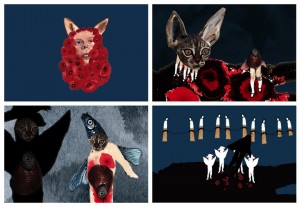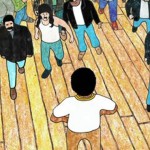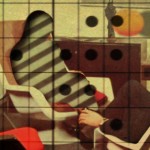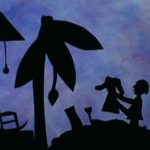SPECIAL AFFECTS: D.I.Y. FEMALE ANIMATORS
SPECIAL AFFECTS: LESLIE SUPNET INTERVIEWS FELLOW ANIMATORS ELISABETH BELLIVEAU, MARTHA COLBURN, AMY LOCKHART, JESSICA MACCORMACK AND EMILY PELSTRING
——————–
Editor’s Note: Leslie Supnet is a Winnipeg-based independent animator that I greatly admire. Her sweet, sad and surreal illustrations and animated shorts (including Fair Trade, Hang in There, The Animated Heavy Metal Parking Lot and more) speak to the emotional intersection between nostalgic yearning and quiet tragedy. I asked Leslie to interview some of her fellow D.I.Y. animators about their processes, and her choice of interview subjects ranged from internationally-renowned collage artist Martha Colburn to local artists such as Jessica MacCormack and Emily Pelstring. Full bios on these animators follow the interview. (KJ)
——————–
Animation is a gift. There seems to be no end in sight when it comes to the kind of experimentation, imagination, and design that comes with this kind of moving image form that is not a slave to representation, narrative or budget. Though a painstaking time-consuming process, artists find creative ways through limitations to make dynamic animated works that bewilder, awe and inspire. I asked some of my favourite interdisciplinary artists working with animation who inspire me about this form and their artistic processes.
——————–
Leslie Supnet: How did you get started in animation? Are you mainly focused on animation, or is it part of a larger arts practice?
Elisabeth Belliveau: I started animating between finishing my BFA in Calgary, Alberta and going to the Banff Centre. Some of my friends were working at Quickdraw Animation Society and it sort of turned into a hangout where we all would collaborate and help each other out. I was making sculpture at the time and animation really clicked for me – as a way to bring my sculpture to life. I have continued to produce animation as part of my interdisciplinary practice as a way to bridge image and text, material and narrative.
Martha Colburn: By animating the titles to my found footage films. I made the titles on super 8mm. I make collages after I animate the materials. I also VJ and paint and write and play around with music. I put out 6 records of my music with the band The Dramatics in the 90’s.
Amy Lockhart: I started in animation in Halifax, Nova Scotia. I was attending the Nova Scotia College of Art and Design and took some experimental animation (16mm film) courses through the Atlantic filmmaker’s co-op, taught by Helen Hill. I really took to it, especially Helen’s way of making films and teaching and just being. I then ended up dropping out of art school and continuing to make animations, and learn about animation. This included another advanced experimental animation course with Helen and a 5 month residency at the Quickdraw Animation Society in Calgary. I heard about the co-op and wanted to learn more about traditional animation so I researched a plan of study and applied for a professional development grant from the Nova Scotia Arts Council. This was also largely inspired by Helen Hill, who had applied for a similar grant to study hand-processed filmmaking across Canada, and then wrote a DIY book about it. Since then I have continued to make films and learn about animation, sound and filmmaking through workshops, internet, books, other animators.
My animation is part of a larger body of work. A lot of my work focuses on accessibility and the use of materials and processes usually associated with low culture, such as moving images, comics, cartoons, pet portraits. So it all sort of ties together.
Jessica MacCormack: I started animating when I moved to Germany in 2006 and was working on a project in which I had constructed a series of internet personas on YouTube. On one of the channels, Maybechildhood, I was using animation as a way of graffiti-ing on other channel’s videos and walls as a response. My aim was to create dialogue around democratic media, corporations and surveillance… but I think I got side tracked with animating.
Emily Pelstring: I got started in animation during undergrad at Rhode Island School of Design. I chose to study animation because I was into drawing, but also interested in performance, so I thought I’d end up doing character-based work. However, the program there leaves a lot of room for exploration of moving image media, and I ended up doing experimental films and video installations, and working animated sequences into them.
Now I engage in multi-media projects and use animation techniques to create special effects and magic tricks where necessary. I would say about half of the projects I have done in the last 5 years involve animation in some way, though it’s rare I do something that could purely be categorized as a stand-alone animation.
LS: Do you animate at a studio, or at home? What equipment and / or software do you use to make your work?
EB: I have tried animating at home, in private studios and institutional studios and have learned that they all work and don’t work for different reasons. Right now I am animating at home and using FrameThief animation software. It is pretty straightforward program and it’s free – I think its from 2004 + but FrameThief is a workhorse, I have used iStopMotion too, but I don’t like it as much. The lunchbox synch machine is still my favourite animating tool but they are pretty hard to come by and super expensive.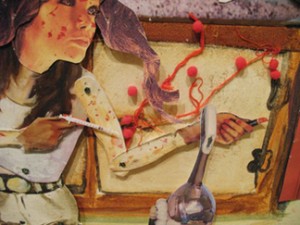
MC: At home, which is an old speakeasy Italian bar from the 1930’s in Queens. In terms of equipment, a 16mm Canon Scoopic camera. I edit everything in-camera and put the 2 minute chunks together in final cut pro. Very simple and clear cut. I use a tripod someone gave me and a thrift store table I found which I continually modify for different layers of glass and things to move about on. I keep focus on the idea that my ideas and vision should grow and my means of making remain simple. I use mirrors and glass and things that create effects without computer effects.
AL: I used to animate on 16mm film using an Oxberry. That’s the method I first learned and at the time, it was actually a lot easier than computer or video animation. But I have now gone to the other side, heh… I have a system I use at home with a digital SLR camera and a frame capture program. I still use under the camera techniques and try to shoot everything as is rather than messing around with bits and pieces in the computer. I miss the days when you could watch an animation on film and know that what you are seeing was at one time a bunch of objects assembled under a camera.
As far as programs, for my animation The Collagist I worked with a mini-DV video camera attached to a shelf sort of thing and two desk lamps, with FrameThief program. Now I use a DSLR camera with Dragon Stop Motion program, which is a pretty great program (and you can get a month free trial), and some professional fluorescent lights (they are cheaper and not as hot as halogen, also the fixture accommodates 3 bulbs to reduce high spots and flickering). I am also working on getting a good quality copy stand that can do manual zooms, and rigging up some sort of simple system to do manual pans. I am basically creating a semi professional jerry-rigged Oxberry stand.
JM: I animate at home using frame by frame stop-motion with Photoshop and Final Cut Pro.
EP: I work from home on an animation stand that I built. I do mostly cut-out or stop-motion with small objects against green or black screens and then do lots of compositing of layers. I use After Effects and Premiere or Final Cut. Manskinpants was animated at home and then processed at the Experimental TV Center on analog video synthesizers. That was a rare and much appreciated opportunity.
LS: Animation lends itself to seemingly limitless imaginative ideas, styles, materials, experimentation, and working with a lo-budget. Is there a particular style of animation you are interested in or that you explore in your work?
EB: My work is really intuitive, improvisational and embraces a make do with what’s at hand resourcefulness. Material engagement is what motivates my work and I enjoy animations that show experimentation with materials. Working lo-budget seems to allow a freedom to experiment on some levels, to work independently and privileges time over money. As a full time artist I can make time easier than money and I enjoy the animation process. The minute little motions that add up after hours/days/weeks into something that really has some magical motion and sense of time is so rewarding. To create the illusion of an inanimate object that is moving and breathing still fills me with wonder.
MC: I work in the spirit of experimentation. I always design a new animation stand, think of a new way to film, a new way to convey my idea, a new way to light the film and design the sound. My next film I explore reflections and depth and push the limits of what i can do with a single image. So I am limited in my budget and my materials and my amount of space, but perhaps it is these limitations that force me to create the best film that i can out of these somewhat crude materials. This is why I edit in-camera. Then I don’t edit my own thoughts in a way and have to push the faith I have in myself in the moment of filmmaking.
AL: I like to animate under the camera, using older experimental animation techniques, rather than in the computer. This includes combining cut out animation, paper puppets, replacement animation and drawn animation. My focus is mostly on high ambition, low overhead. So using techniques that lighten the work load and allow me to create longer, more in depth pieces. For instance, the use of cycling, cut outs, etc., ways to get around drawing and colouring a million separate drawings.
JM: I am primarily interested in easily accessible content, and what quick and crude animation can do to engender empathy. I was frequently using stop-motion as a method for collaboration with musician Rae Spoon and using it as a tool for workshops with women and youth in conflict with the law. Regarding the styles I have used, I am constantly trying to challenge and expand upon the form but primarily am coming from more of a background in painting and drawing, rather than film, so my animations remain quite flat and process driven.
EP: Simply bringing inanimate things to life is enough to amaze me every time I see it happen. I’m interested in a DIY aesthetic and experimental work that shows evidence of the mechanics behind it. I also like work that crosses disciplines in creative ways, or combines techniques and materials in unexpected ways.
This winter I started a collaborative project called Inflatable Deities with Jessica Mensch where we made a bunch of videos to go with songs we had written for the context of live performance. It was so amazing doing these insane long video sessions where we would start with a few images of interesting juxtapositions of materials or characters or sites, and just make decisions as we were recording (like dumping 11 vials of glitter on Jessica’s face and reconstructing parts of her roommates’ human-sized kaleidoscope sculpture in her kitchen, or filling a giant inflatable cube with balloons, or pouring 2 gallons of liquid soap on a wall and recording it drip for 20 minutes). In the end, it seemed that almost everything we did went with the music so easily.
But now that I’m more comfortable with generating noise, I want to work on making electronic soundscapes for videos/animations, and really map sound to movement and try to expand the image through sound.
LS: What are your thoughts on presentation of animated works, namely on-screen in a theatre, a gallery setting, and on the internet? Is there one that works better than the other?
EB: I have really been trying to explore exhibition /screening contexts for my work in the last few years. During grad school I was building wall mounted animation video displays, inserting screens in walls and projecting big and small. I tried to go super small and intimate to reflect the nature of my animation process, but lately I feel like projecting little things big again – theatre style. I saw the animation installations of Yves Netzhammer (Switzerland) and Nathalie Djurberg (Sweden) over the last few years and appreciated how they each build and expand their animations into sculptural spaces and architecture. The internet for me is a great place to skim work – but I still feel a need to be located in a formal space to experience the work and give it the attention I feel it deserves.
MC: I think of my films as films or art or music. I don’t mind where they are shown or for that matter, how. I limit them showing by how much work I can invest in distributing them. I do not always take easy offers, like streaming offers, as seriously as some festivals so I send them to Festivals and Museums and stuff.
They all work fine, because people can see the films. I like the internet for my like, Join the Freedom Force or Dolls VS Dictators. I think all places work well. The theatre is seen by perhaps the fewest people and is the most expensive for viewers. Museums or galleries are ideal because they are sometimes free to enter and there is a long time for people to come see the work.
AL: I don’t think there’s one way that works better than the other, its based on what suits the piece. There’s something to be said for sitting in a theatre and focusing on a piece from beginning to end. But I’ve seen nice looped pieces in galleries and nice animated websites too.
JM: I’d have to say, as much as I love sitting in the theatre, I really think it is amazing to be able to distribute work on the internet. We can access works from all types of people this way and not just so-called professional artists, which in many ways challenges these roles. I appreciate art not always being so precious and elitist (though I know not all people have access to computers and the internet). It is exciting to see people experimenting with video in ways that 30 years ago only a few people were doing.
EP: All of the above are just great and I like seeing animation in all of these contexts. It really depends on the piece and how the maker wants to control the viewer’s experience.
LS: Favorite animators or artists who have inspired you?
EB: Animators: Yves Netzhammer (Switzerland) , Nathalie Djurberg ( Sweden), Emily Vey Duke and Cooper Battersby (Canada) , Wendy Tilby and Caroline Leaf ( NFB-ers) Rachel Johnson (who made The Toll collector animation), Lotte Reiniger, Jennifer Levonian.
MC: The Czech animators, like Karel Zeman and Jiri Trnka, and I have been inspired by Russian animators Ladislaw Starevich and Larry Jordan, Susan Pitt and many more…like Bruce Bickford and Oskar Fischinger, you know -the classics – Lotte Reiniger.
AL: I am a really big fan of Sally Cruikshank‘s animations. I was also very inspired and influenced by Helen Hill’s animations and her approach to art and filmmaking and life. Especially her focus on getting things made and lack of hierarchy or pre-tense. Her sense of community, generosity and skill sharing. I am so grateful to have had her introduce me to animation and I think my good feelings about the medium are due to her and the community surrounding her. I pretty much make animations thanks to Helen Hill.
JM: Karen Spencer has been an amazing role-model and mentor to me for many years, though she is not an animator. Elisabeth Belliveau led me to see how simple and lovely animating actually is. Otherwise, artists like Amy Lockhart, Duke & Battersby, William Kentridge, Ryan Trecartin and many amazing music videos out there have inspired my animation and video.
EP: In no particular order: The Residents, Yoshi Sodeoka, Harry Smith, Lotte Reiniger, Kara Walker, Kent Monkman, Kenneth Anger, Delia Derbyshire, René Laloux, Daniel Barrow, Paper Rad….. Oh, and LESLIE SUPNET!!!!! <3
LS: Are you working on a new animation project at the moment? If so can you explain a bit about it?
EB: Yes, I am working on a silent animation about women walking in movies. It is a series of walking cycles I draw/copy from famous movies and then animate (without rotoscoping) . It is looking at moments in movies where lead women characters make momentus decisions while walking. Some of the films I am excerpting walking cycles from are Belle de Jour, Picnic at Hanging Rock and Poltergeist. I am using an animation style that is a sort of draw and erase technique with black plasticine. I am always thinking about the potential for animation to explore material and subject transformation. In this work, figures appear without origin or destination , the transformation is more subtle but there is something haunting that is embodied in the walking cycles. I am have only completed the first 40 seconds of this work – so it is really in the early stages.
MC: I am working on a film for WBAI radio, a short that will deal with the problem of fracking. This is gas drilling that is happening on the East Coast that pollutes the land and water and is unregulated. They plan to do this around the Delaware Water Gap which gives New York City and all of its water. At the same time as working on this film, I am making a film I’ve been researching for about two years, on Mexico and America and the drug ‘war’ in which drugs are winning.
I use short films like the one minute one on fracking to try out new techniques, rhythms in editing, musical combinations and lighting. Then I apply these to larger films like the one on Mexico.
AL: Right now I am working on my first feature length animation, Dizzler in MASKHERAID. It’s a story of redemption, based on a pop star with super powers who tries to make a comeback and take control of her life. I’m animating it using paper puppets, cut outs and drawn animation. I’m also going to try to play with lighting and depth more by using a multiplane stand and different lighting set ups.
JM: Currently I am working on an animated documentary about criminalization in Canada entitled Where we were not, which is being made in collaboration with a group of women I have worked with, and formed friendships with while creating art projects in prisons and centres for marginalized people. Narrated by an abolitionist activist, a First Nations transgendered women, and two women serving life sentences, this project gives a first hand account of the Canadian injustice system.
I am currently trying to sort out how to animate their very personal and well articulated stories and also considering turing it into a sound piece.
EP: I just finished a series of works for a collaborative residency at Studio XX, and I still have finishing touches to do on that one, plus prepare for future iterations of that project, but as usual I’m incubating several projects that are in various stages of completion. Right now I’m proceeding on my own with a video installation that has been in my mind for
over a year. The source material is footage of a style of architecture popular in the industrial area of Montreal that I affectionately call “stream of consciousness architecture”, where it just seems like they attached a bunch of rusty cubes of aluminum siding to older structures, making up shapes as they went along. I took a series of photos around my neighborhood that I’ve never showed anyone. I processed them at the Experimental TV Center using an audio recording of a train to control the parameters on the video colorizer. The changes in volume of the train sounds make parts of the still image light up in a dynamic way. In that sense the still images get “animated” by the sound. This will end up being a 5-channel, monitor-based video sculpture with sound.
Manskinpants from Emily Pelstring on Vimeo.
———————
Artist Bios/Statements:
Leslie Supnet
Leslie Supnet is a visual artist from Winnipeg, MB. Supnet aims to represent sincerity, universal lived experience, and ineffable emotional experiences in both her drawing and animated work. Her animations have screened at various festivals, such as the Images Festival, International Film Festival Rotterdam, Signal & Noise, Image Forum Festival in Japan, and LA Film Forum.
Elisabeth Belliveau
Elisabeth Belliveau is a recent graduate of the MFA program in Concordia’s Faculty of Fine Arts. “My work is dedicated to the expression of longing, loss and love. Through animation, drawing and sculpture I explore the in-betweeness and potency of transformation in animal-people-creature worlds. Themes of home, nostalgia, the domestic, and the everyday are addressed. My practice is committed to material research and imbuing inanimate objects and drawings with care. I employ diaristic, improvisational and “do it yourself” strategies in my practice to enable self-empowerment and to organize hope.”
Martha Colburn
Born in Pennsylvania (1971), Martha Colburn is an artist filmmaker based in New York. She travels extensively exhibiting and lecturing on her work. She has a B.A. from Maryland Institute College of Art and MA equivalent from Rijksakademie Van Beeldende Kunst (Royal Academy of Art) in Holland. A self-taught filmmaker, she began in 1994 with found footage and Super 8 cameras and has since completed over 40 films. She also selects elements from her films and using slide projections and murals to create installations. Ms. Colburn has taught workshops on her animation technique in China, Europe, Canada, and all parts of America. She has made music videos/ music-art films for bands such as Deerhoof, Serj Tankian, They Might Be Giants and the documentary The Devil and Daniel Johnson. In the 2007 Sundance Film Festival she was invited to initiate the New Frontiers film and video installation program, with Meet Me in Wichita. Her work will also be exhibited in Centre Pompidou in Paris, Pallant House (UK) and at Galerie Anne De Villepoix in Paris in 2007. She exhibits with Galerie Diana Stigter in Holland.
Amy Lockhart
Amy Lockhart is an independent animator and artist. Her artwork and award winning films have been exhibited internationally. Amy has educated herself through attending the Nova Scotia College of Art and Design, completing an artist residency at the Quickdraw Animation Society and completing a fellowship at the National Film Board. She has received international acclaim, speaking and exhibiting her work at various art institutions including The California Institute of the Arts, where she completed an artist residency.
Jessica MacCormack
Working with animation, video, painting, drawing, installation and intervention, Jessica MacCormack’s interdisciplinary practice examines the complex position of culture within neoliberal capitalism and critiques modes of social control, while exploring the potential for art to function as a site of resistance. She is specifically interested in how modes of violence are perpetuated collectively through popular narratives, concepts of justice and denial of accountability. Frequently engaging with communities and collectives, her practice eschews individual authorship in favour of collaboration. In 2008, she completed an MFA through the Public Art and New Artistic Strategies program at the Bauhaus University (Weimar, Germany). Her work has been shown nationally and internationally in festivals, screenings, artist run centres and museums, and she is currently employed as an Assistant Professor of Studio Arts at Concordia University. http://jessicamaccormackrmack.tumblr.com/
Emily Pelstring
Emily is a multi-media artist who creates video installations, experimental films, performances and sound art. She obtained her BFA from Rhode Island School of Design in Film/Animation/Video, and her MFA from Concordia University in Studio Arts with a concentration in Film Production. She currently works out of Montreal, and has received project support from the Liaison of Independent Filmmakers of Toronto, the Experimental Television Center, Studio XX and others. She has exhibited and screened work at various institutions in Canada and the US, including XPACE Cultural Centre, Galerie Art Mûr, Centre des Arts Actuels Skol, and Anthology Film Archives.

 May 1, 2011
May 1, 2011  1 Comment
1 Comment
